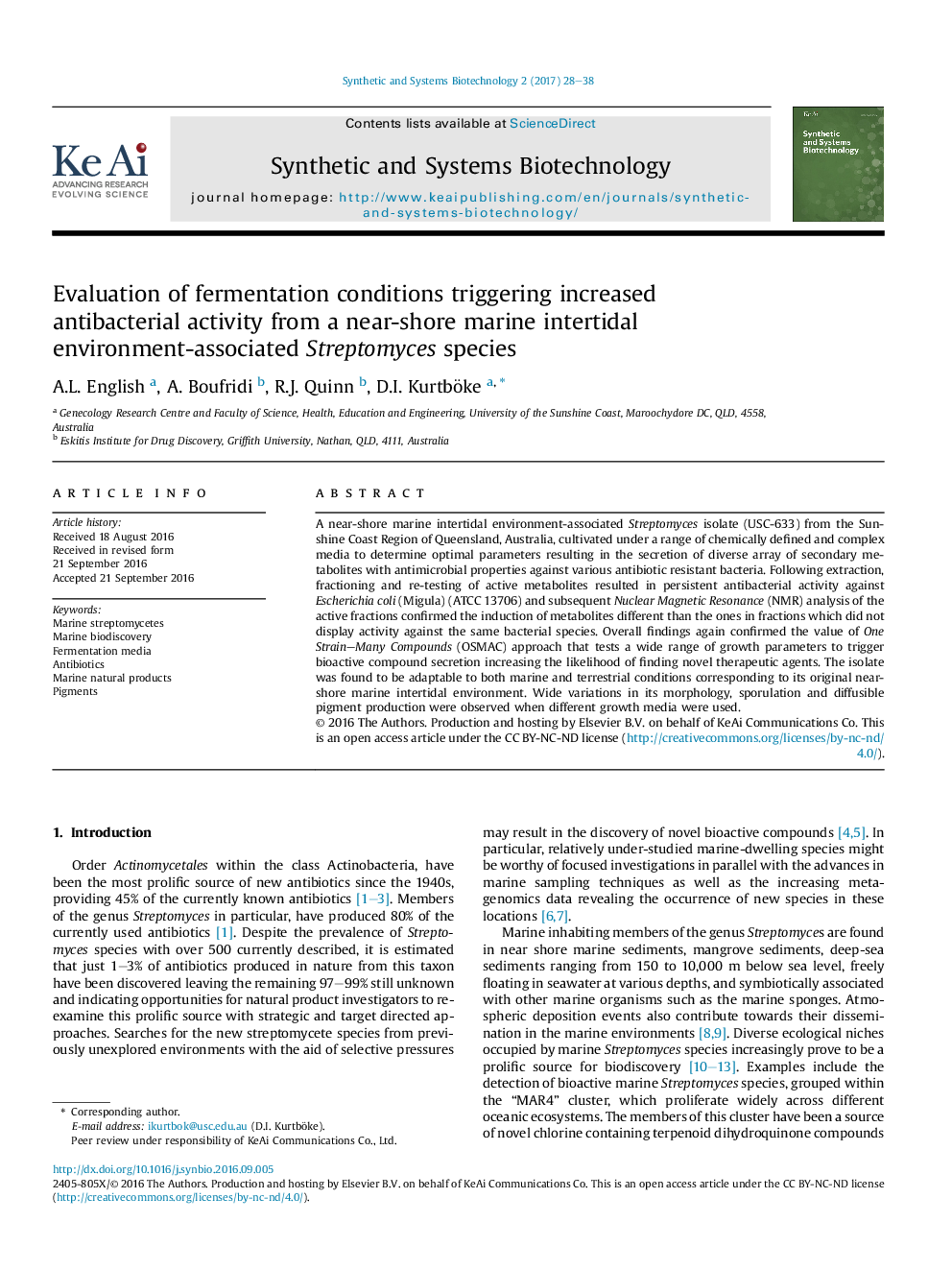| Article ID | Journal | Published Year | Pages | File Type |
|---|---|---|---|---|
| 5522860 | Synthetic and Systems Biotechnology | 2017 | 11 Pages |
A near-shore marine intertidal environment-associated Streptomyces isolate (USC-633) from the Sunshine Coast Region of Queensland, Australia, cultivated under a range of chemically defined and complex media to determine optimal parameters resulting in the secretion of diverse array of secondary metabolites with antimicrobial properties against various antibiotic resistant bacteria. Following extraction, fractioning and re-testing of active metabolites resulted in persistent antibacterial activity against Escherichia coli (Migula) (ATCC 13706) and subsequent Nuclear Magnetic Resonance (NMR) analysis of the active fractions confirmed the induction of metabolites different than the ones in fractions which did not display activity against the same bacterial species. Overall findings again confirmed the value of One Strain-Many Compounds (OSMAC) approach that tests a wide range of growth parameters to trigger bioactive compound secretion increasing the likelihood of finding novel therapeutic agents. The isolate was found to be adaptable to both marine and terrestrial conditions corresponding to its original near-shore marine intertidal environment. Wide variations in its morphology, sporulation and diffusible pigment production were observed when different growth media were used.
